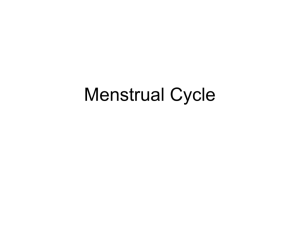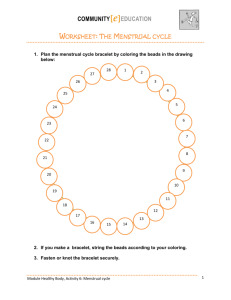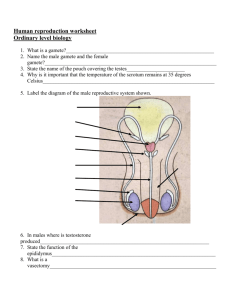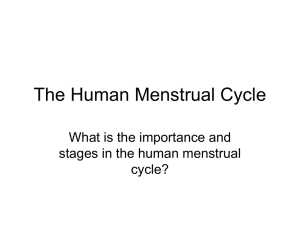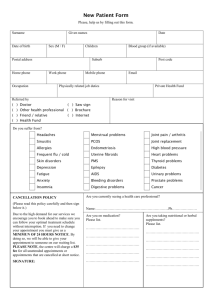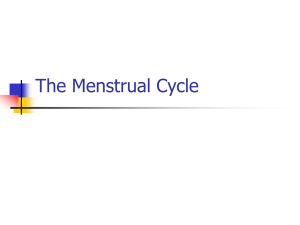Menstrual Cycle: Understanding the Phases & Common Problems
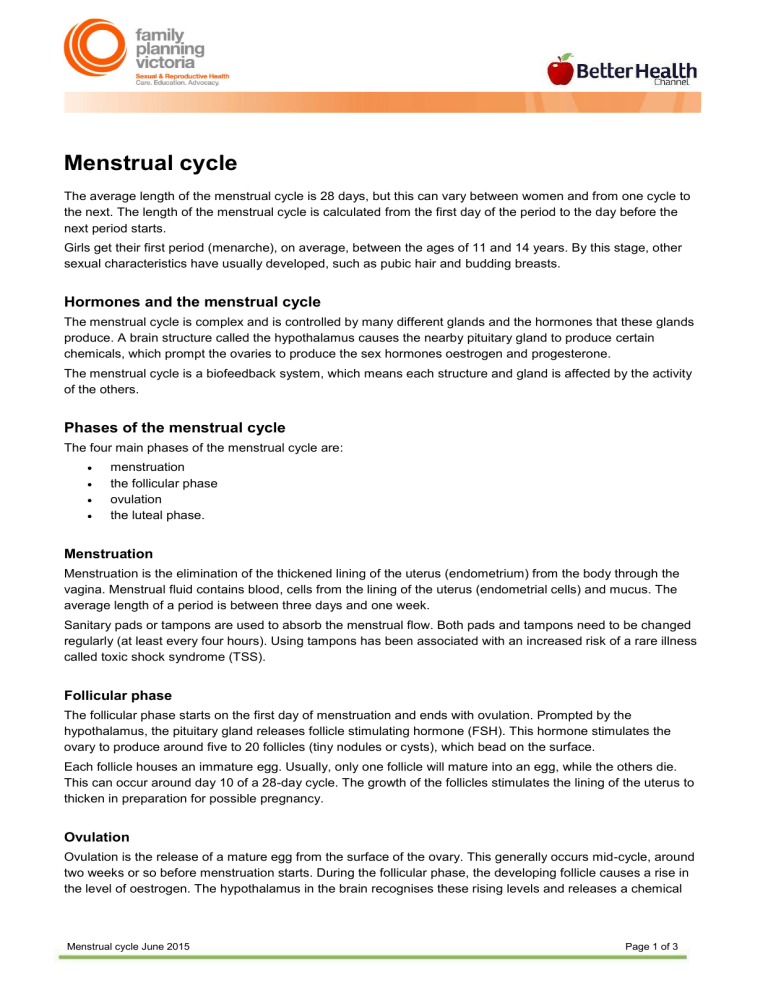
Menstrual cycle
The average length of the menstrual cycle is 28 days, but this can vary between women and from one cycle to the next. The length of the menstrual cycle is calculated from the first day of the period to the day before the next period starts.
Girls get their first period (menarche), on average, between the ages of 11 and 14 years. By this stage, other sexual characteristics have usually developed, such as pubic hair and budding breasts.
Hormones and the menstrual cycle
The menstrual cycle is complex and is controlled by many different glands and the hormones that these glands produce. A brain structure called the hypothalamus causes the nearby pituitary gland to produce certain chemicals, which prompt the ovaries to produce the sex hormones oestrogen and progesterone.
The menstrual cycle is a biofeedback system, which means each structure and gland is affected by the activity of the others.
Phases of the menstrual cycle
The four main phases of the menstrual cycle are:
menstruation the follicular phase ovulation the luteal phase.
Menstruation
Menstruation is the elimination of the thickened lining of the uterus (endometrium) from the body through the vagina. Menstrual fluid contains blood, cells from the lining of the uterus (endometrial cells) and mucus. The average length of a period is between three days and one week.
Sanitary pads or tampons are used to absorb the menstrual flow. Both pads and tampons need to be changed regularly (at least every four hours). Using tampons has been associated with an increased risk of a rare illness called toxic shock syndrome (TSS).
Follicular phase
The follicular phase starts on the first day of menstruation and ends with ovulation. Prompted by the hypothalamus, the pituitary gland releases follicle stimulating hormone (FSH). This hormone stimulates the ovary to produce around five to 20 follicles (tiny nodules or cysts), which bead on the surface.
Each follicle houses an immature egg. Usually, only one follicle will mature into an egg, while the others die.
This can occur around day 10 of a 28-day cycle. The growth of the follicles stimulates the lining of the uterus to thicken in preparation for possible pregnancy.
Ovulation
Ovulation is the release of a mature egg from the surface of the ovary. This generally occurs mid-cycle, around two weeks or so before menstruation starts. During the follicular phase, the developing follicle causes a rise in the level of oestrogen. The hypothalamus in the brain recognises these rising levels and releases a chemical
Menstrual cycle June 2015 Page 1 of 3
called gonadotrophin-releasing hormone (GnRH). This hormone prompts the pituitary gland to produce raised levels of luteinising hormone (LH) and FSH.
Within two days, ovulation is triggered by the high levels of LH. The egg is funnelled into the fallopian tube and towards the uterus by waves of small, hair-like projections. The life span of the typical egg is only around 24 hours. Unless it meets a sperm during this time, it will die.
Luteal phase
During ovulation, the egg bursts from its follicle, but the ruptured follicle stays on the surface of the ovary. For the next two weeks or so, the follicle transforms into a structure known as the corpus luteum. This structure starts releasing progesterone, along with small amounts of oestrogen. This combination of hormones maintains the thickened lining of the uterus, waiting for a fertilised egg to stick (implant).
If a fertilised egg implants in the lining of the uterus, it produces the hormones that are necessary to maintain the corpus luteum. This includes human chorionic gonadotrophin (HCG), the hormone that is detected in a urine test for pregnancy. The corpus luteum keeps producing the raised levels of progesterone that are needed to maintain the thickened lining of the uterus.
If pregnancy does not occur, the corpus luteum withers and dies, usually around day 22 in a 28-day cycle. The drop in progesterone levels causes the lining of the uterus to fall away. This is known as menstruation. The cycle then repeats.
Common menstrual problems
Some of the more common menstrual problems include:
Premenstrual syndrome (PMS) – hormonal events before a period can trigger a range of side effects in women at risk, including fluid retention, headaches, fatigue and irritability. Treatment options include exercise and dietary changes.
Dysmenorrhoea – or painful periods. It is thought that the uterus is prompted by certain hormones to squeeze harder than necessary to dislodge its lining. Treatment options include pain-relieving medication and the oral contraceptive pill.
Menorrhagia – or heavy menstrual flow. If left untreated, this can cause anaemia. Treatment options include oral contraceptives and a hormonal intrauterine device (IUD) to regulate the flow.
Amenorrhoea – or absence of menstrual periods. This is considered abnormal, except during prepuberty, pregnancy, lactation and menopause. Possible causes include low or high body weight and excessive exercise.
Where to get help
Your doctor
Gynaecologist
Family Planning Victoria Tel. (03) 9257 0100 or freecall 1800 013 952
Things to remember
The menstrual cycle is complex and controlled by many different glands and the hormones that these glands produce.
The four phases of the menstrual cycle are menstruation, the follicular phase, ovulation and the luteal phase.
Common menstrual problems include heavy or painful periods and premenstrual syndrome (PMS).
Latest updates and more information
www.fpv.org.au
www.betterhealth.vic.gov.au
Menstrual cycle June 2015 Page 2 of 3
Copyight © 1999/2015 State of Victoria. Reproduced from the Better Health Channel website (www.betterhealth.vic.gov.au) at no cost with permission of the Victorian Minister for Health. Unauthorised reproduction and other uses comprised in the copyright are prohibited without permission.
Disclaimer
Content on this website is provided for education and information purposes only. Information about a therapy, service, product or treatment does not imply endorsement and is not intended to replace advice from your doctor or other registered health professional. Content has been prepared for Victorian residents and wider Australian audiences, and was accurate at the time of publication. Readers should note that, over time, currency and completeness of the information may change. All users are urged to always seek advice from a registered health care professional for diagnosis and answers to their medical questions.
Menstrual cycle June 2015 Page 3 of 3

